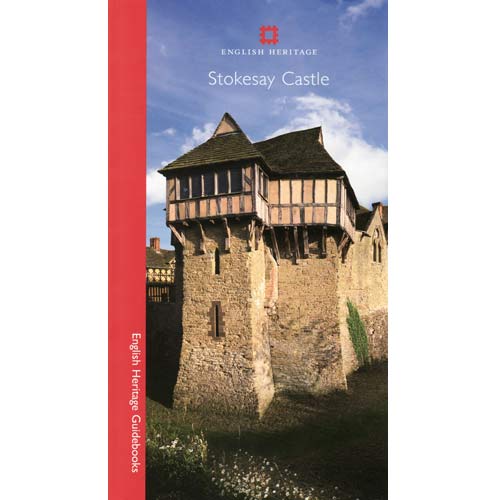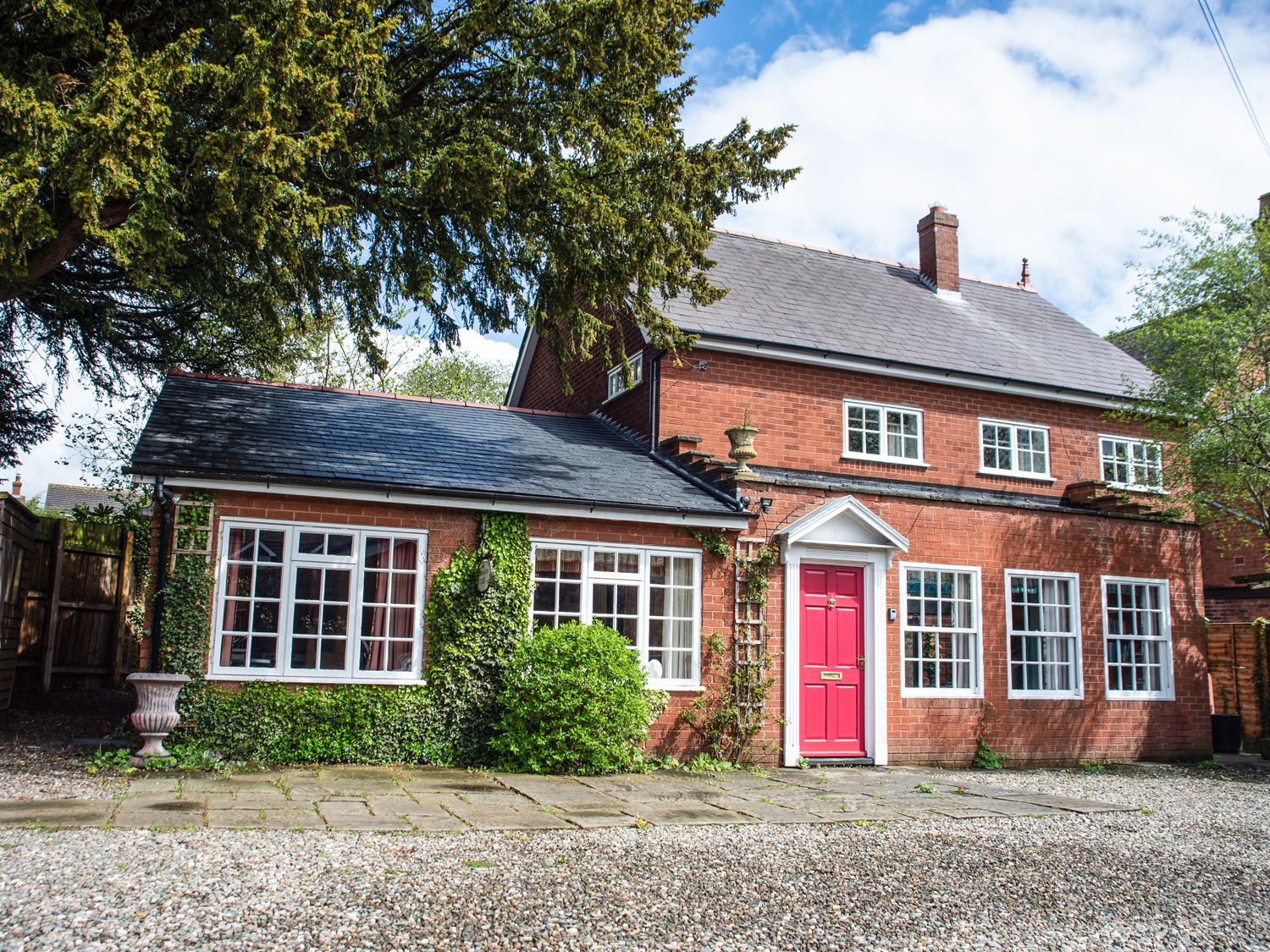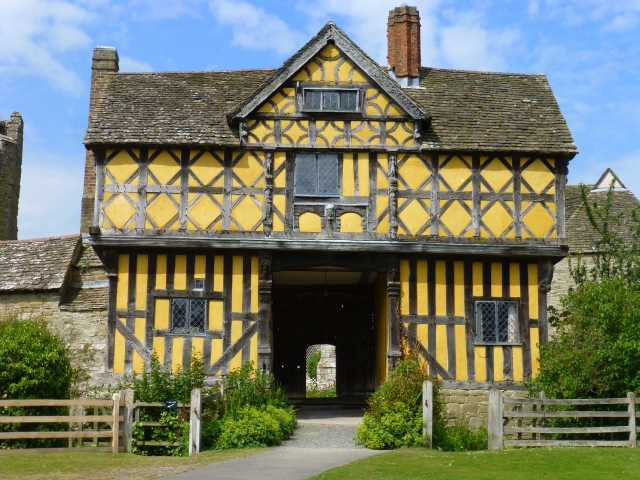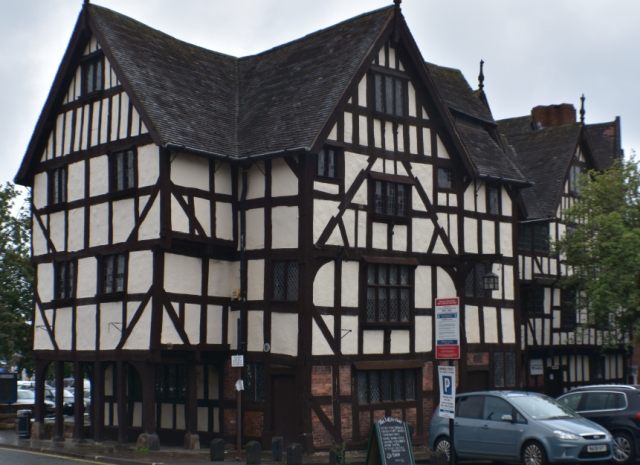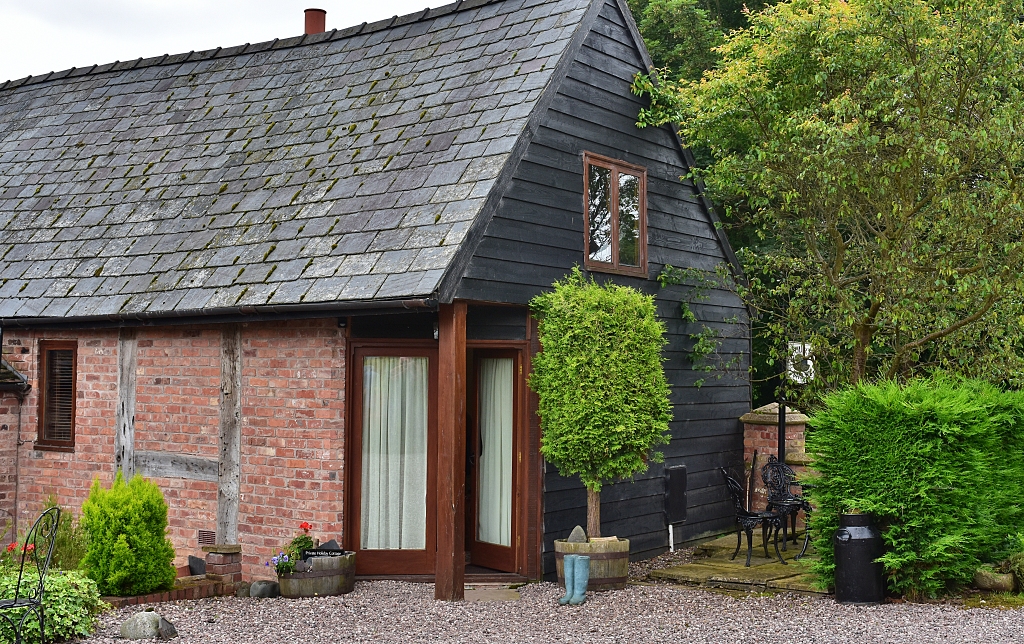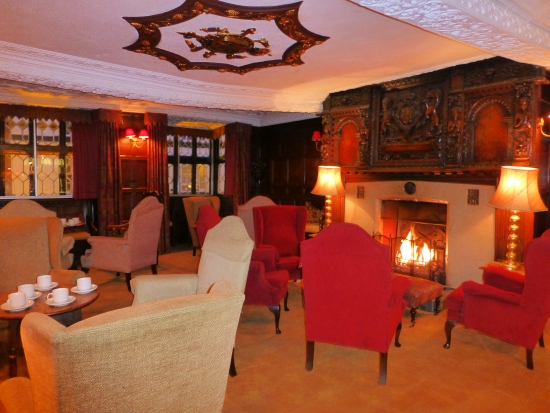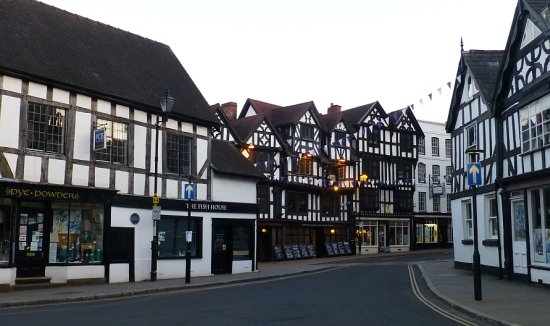Stokesay Castle
Stokesay Castle is a wonderful find, whether you love history, architecture, or are just looking for an enjoyable day out! It's a late thirteenth century moated and fortified manor house built by Laurence of Ludlow, at that time one of the richest men in England. It can be found on the road between Ludlow and Shrewsbury set amongst beautiful Shropshire landscape. As you can see from our photos, we visited on a gloriously sunny day.
Its castle title, towers, moat, and outer curtain wall are all very impressive, but they were never designed to resist a battle. The defences would have been good enough to stop thieves and therefore protect Laurence's family and wealth. Laurence had made his money through the wool trade, first selling sheep fleeces in England and abroad, and later selling his own cloth. He also gained financially by lending money to the rich and powerful.
Let's walk around Stokesay Castle...
Exploring Stokesay Castle
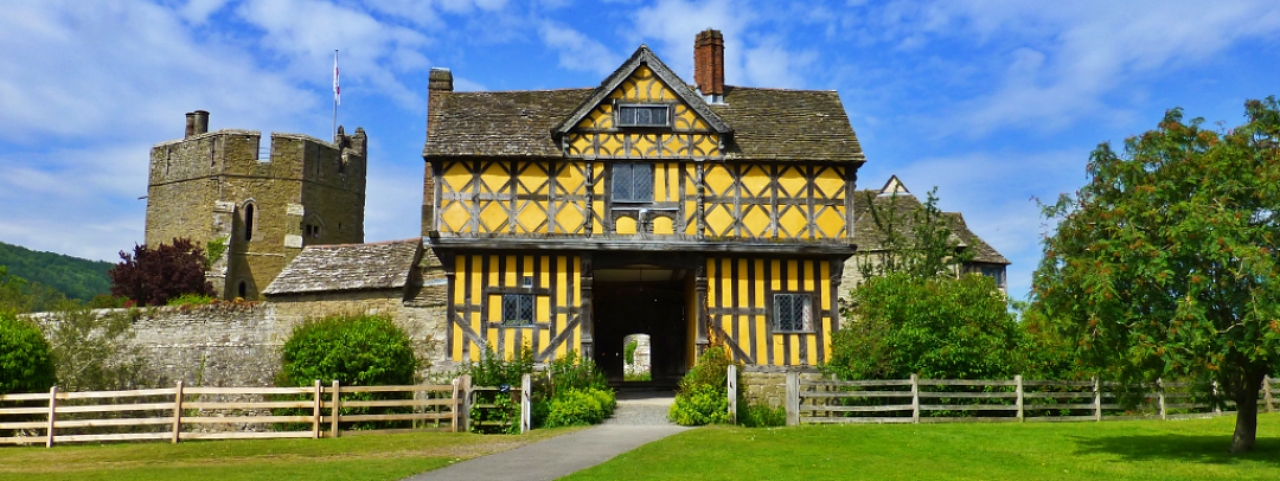 Stokesay Castle © essentially-england.com
Stokesay Castle © essentially-england.comThe view as you walk towards the entrance of Stokesay Castle is dominated by the bright yellow gatehouse. The original gatehouse would have been built in stone like the rest of the castle. What gatehouse we see today dates to 1640/1 and is built from wood and plaster. It’s very brightly coloured, with decorative carved wood, and wooden beams in a diamond pattern that is commonly seen on buildings in Ludlow. Make sure you take the time to study the decorations, which include Adam and Eve!
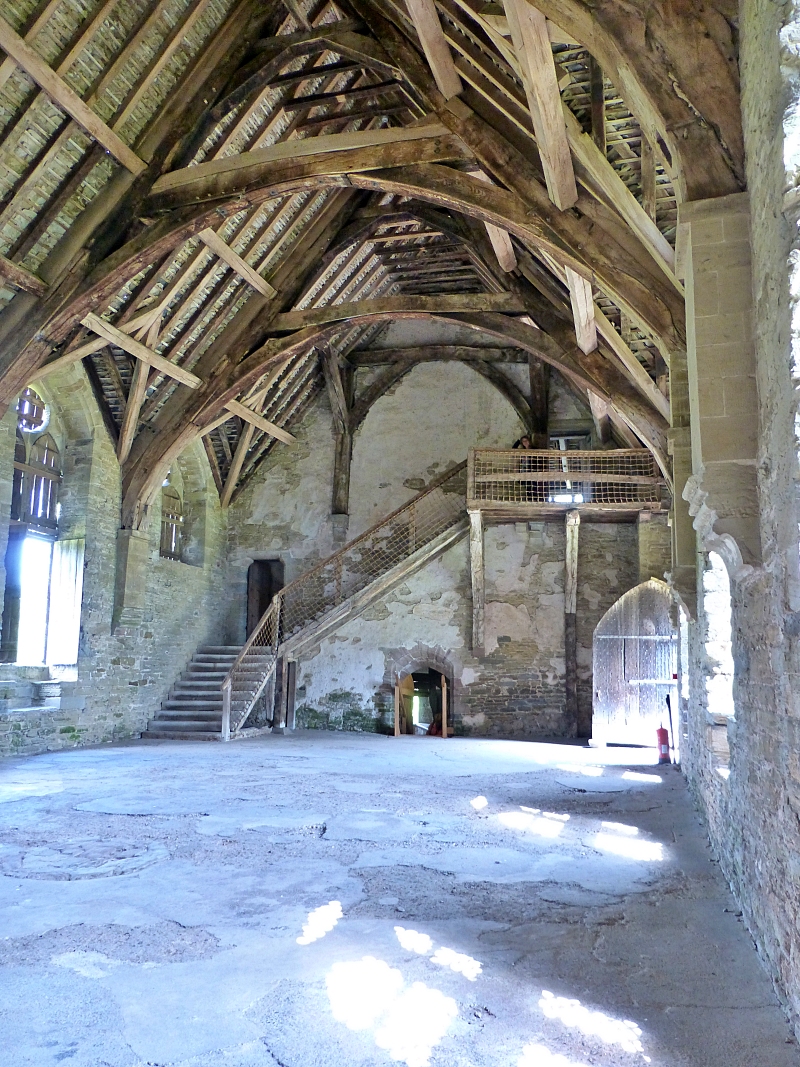 Inside the Great Hall at Stokesay Castle
Inside the Great Hall at Stokesay Castle © essentially-england.com
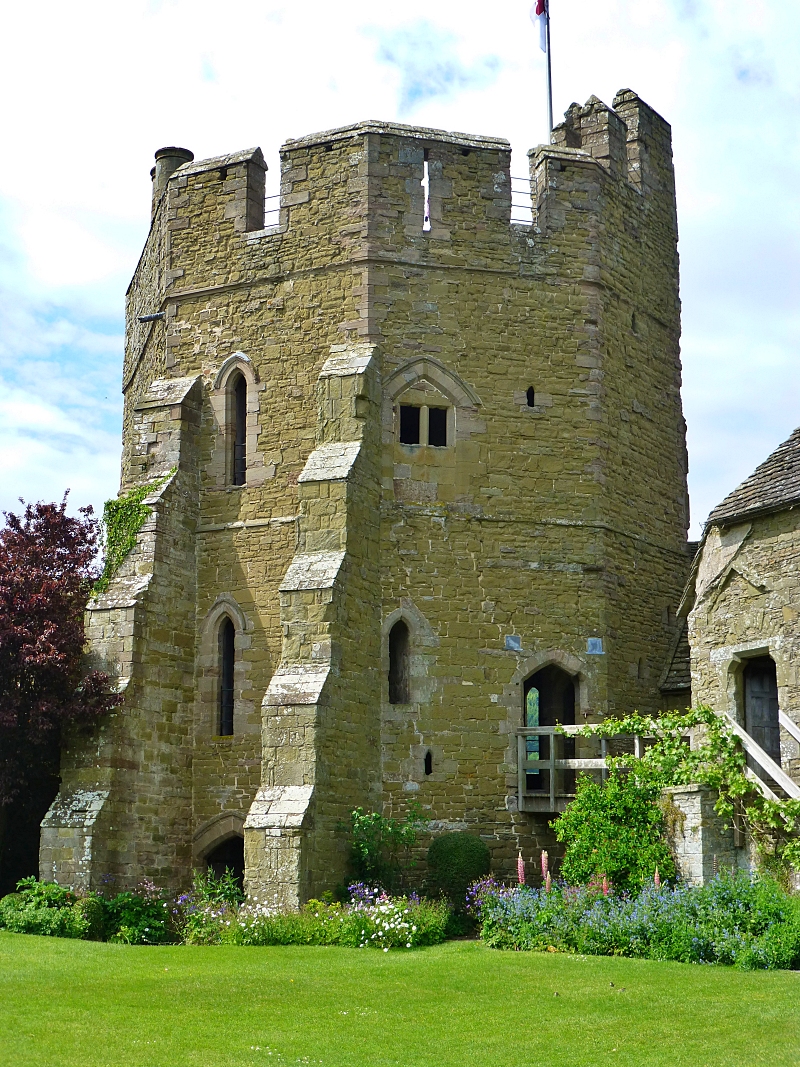 The South Tower of Stokesay Castle
The South Tower of Stokesay Castle © essentially-england.com
The Great Hall is striking and has an excellent wooden roof. Just imagine what it would have been like to serve or even be entertained in such a magnificent hall back in the early 1300s. During the day and on summer evenings it would have been well lit with daylight streaming through the large windows along the hall’s long walls. The glass in the windows would only have covered the upper part of the window, the lower part being open to the weather. During wet or cold periods, wooden shutters were put over the windows. This was certainly a hall to impress!
Laurence and his family and friends would have eaten at the high table running across the hall, from one window to another. The table would have been on a dais. In colder months, there would have been a fire set before them. Two tables, set perpendicular to the dais and running the length of the hall, would have seated servants and staff.
Amazingly, most of the staircase to the north tower is still the original wood from the late thirteenth century. The same carpenter’s marks have been found on the wood used for both staircase, roof beams, and wood in the north tower. The age of the wood has been confirmed as 1280 using dendrochronology (tree ring dating). From the staircase, you get a closer view of the roof construction and a better look over the hall.
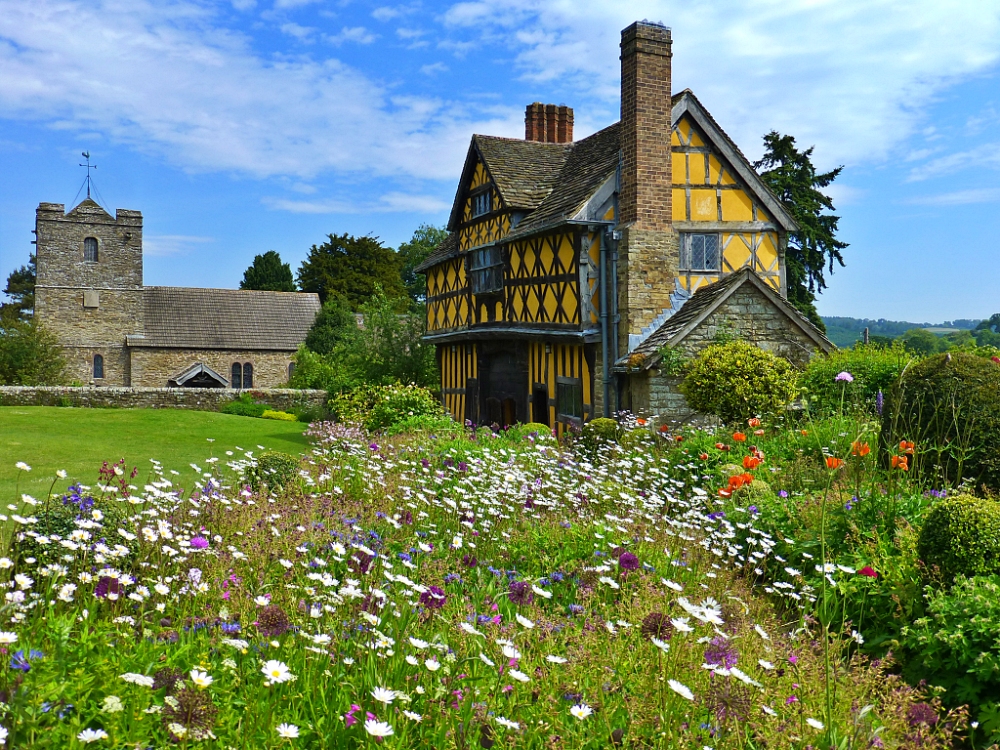 The Gatehouse and The Church of St. John The Baptist
The Gatehouse and The Church of St. John The Baptist © essentially-england.com
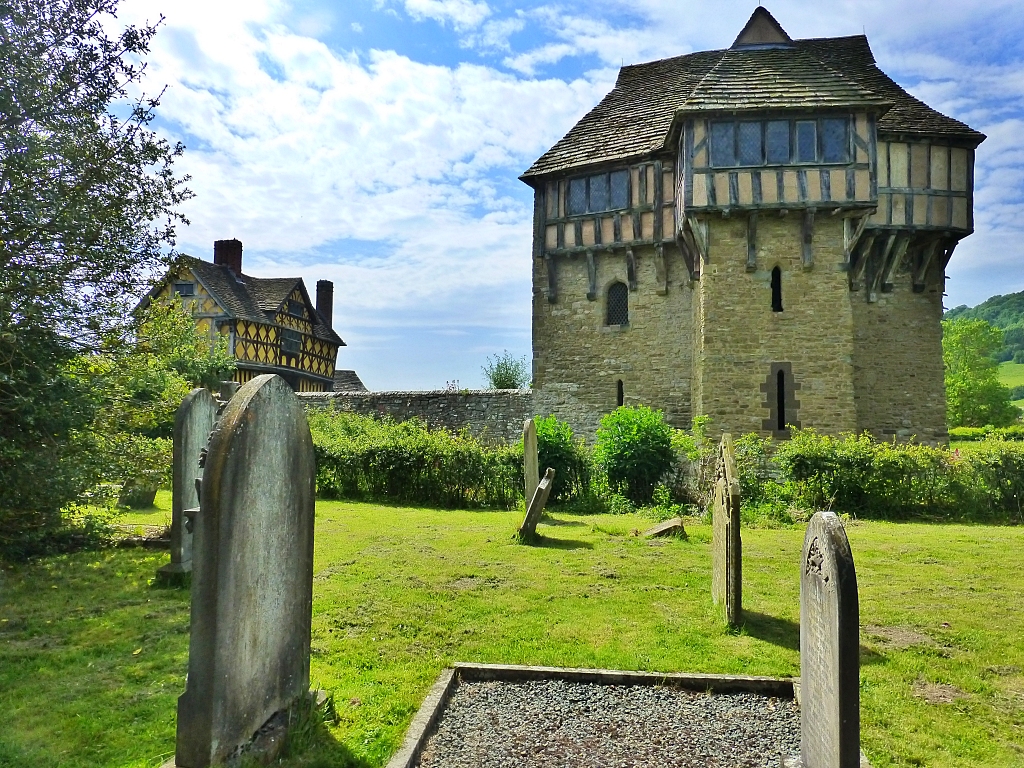 Stokesay Castle North Tower
Stokesay Castle North Tower © essentially-england.com
The rooms in the north tower are not quite as old, although there a couple of nice fireplaces and some medieval floor tiles! Many of the modifications are believed to be seventeenth century. The timber of the main roof is from nineteenth century trees.
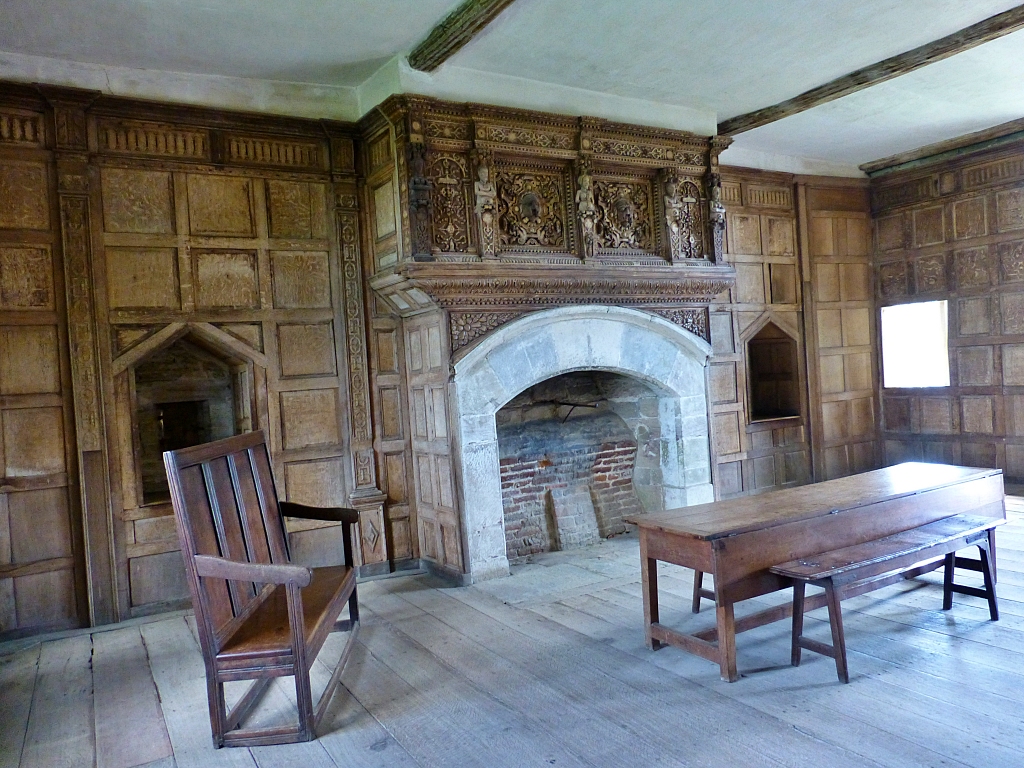 Inside the Solar Block at Stokesay Castle © essentially-england.com
Inside the Solar Block at Stokesay Castle © essentially-england.comThe family would retire from the hustle and bustle of hall life to their Solar Block. The lower floor was probably for storage, but the upper floor reached by an outside staircase would be the family quarters. The staircase is a modern version of what would have been there originally. The family room has been modified, probably around the same time the new gatehouse was built.
The south tower is a slightly later addition, built by Laurence possibly as a sign of his ever-increasing wealth, or as a retreat from his six children. It was damaged by fire in 1830. so most of the timber has been replaced. These days, it offers fine views across the courtyard and surrounding landscape.
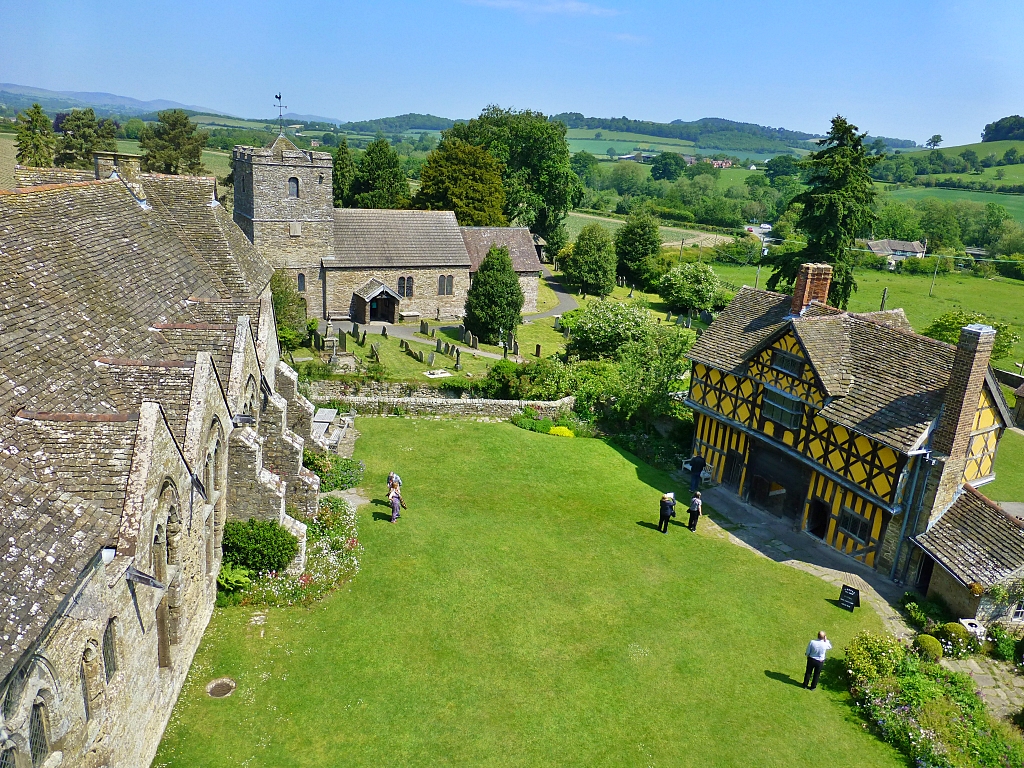 The Stunning View from the South Tower at Stokesay Castle © essentially-england.com
The Stunning View from the South Tower at Stokesay Castle © essentially-england.comMore information on Stokesay Castle and its opening times can the found on the English Heritage website here. There is also a guidebook which gives more details and history about the castle.
Stokesay Castle Guidebook
Are You Planning a Trip to Shropshire?
Shropshire is a marvellous place for history and food lovers! There's so much to see and do and taste, that you'll need more than just a short visit. If food is your thing, head to Ludlow and start exploring from there. For history lovers, Shrewsbury makes a great base with many historical sites in very easy reach.
Where You Could Stay
To see more self-catering cottages in Shropshire click here or check out holiday cottages in other parts of England by clicking here.
If you need to find a hotel, then try one of these search platforms...
More hotel ideas can be found on our Shropshire Hotels page.
What You Could See and Do
Here are a few places that should go on your must-see list:
- Wroxeter Roman City
- Shrewsbury and Shrewsbury Abbey
- Attingham Hall
- Offa's Dyke
- Ironbridge Gorge, Ironbridge & Broseley Jitties
- Coalbrookdale Museum of Iron
- Jackfield Tile Museum and the Tar Tunnel
- Blists Hill Victorian Town - a fantastic living museum
- Ludlow Castle
- Stokesay Castle
Click here for a great list of things to do in Shropshire.
If you have enjoyed reading about Stokesay Castle and are looking for other ideas for days out, then please click here to explore our Shropshire page.
